'Isn't contemporary art crap?'
"I can't tell a piece of contemporary art from a piece of trash..."
You may sometimes think such things.
Certainly, there are contemporary art works in the world that do not look like so-called "works of art" no matter how you look at them, and there are also unfortunate works of art that have actually been discarded because they are considered trash.
In this issue, we would like to introduce an episode that explores the boundary between artworks and trash.
Keiji Usami's large work discarded from the University of Tokyo cafeteria
In spring 2018, "Kizuna" (composed of four canvases), a large work by painter Keiji Usami (1940-2012), which had been on display since 1977 on the wall of the Central Cafeteria at the Hongo Campus of the University of Tokyo (Bunkyo-ku, Tokyo). The University of Tokyo Co-op, the owner of the work, had disposed of it during the renovation of the cafeteria.

Keiji Usami was a famous abstract painter who had been presenting his work since the 1960s, and was a major figure in the field of literature, architecture, and music, as well as creating works of art.
It is believed that the main reason for this is that over the years the people involved have changed generations, and his existence has been forgotten, or he has become too familiar with his work to realize its value, and it has been discarded.
The University of Tokyo took this incident seriously and held a symposium in September of the following year to discuss how "works of art in public spaces" should be viewed in an open forum.
In fact, not only Usami's work but also other portraits and busts had been removed or discarded because the reason for their installation had been forgotten. The incident suggested that it is equally important to "tell the story" of objects of art and cultural value, rather than just leaving them in place.
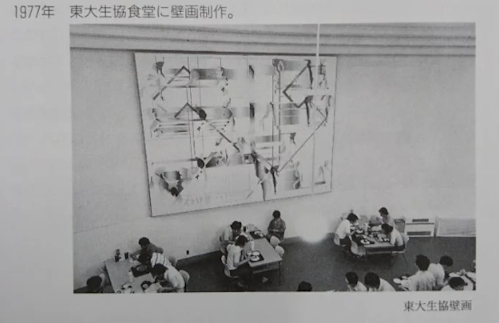
Cleaning crew mistook Damien Hirst's work for trash and disposed of it.
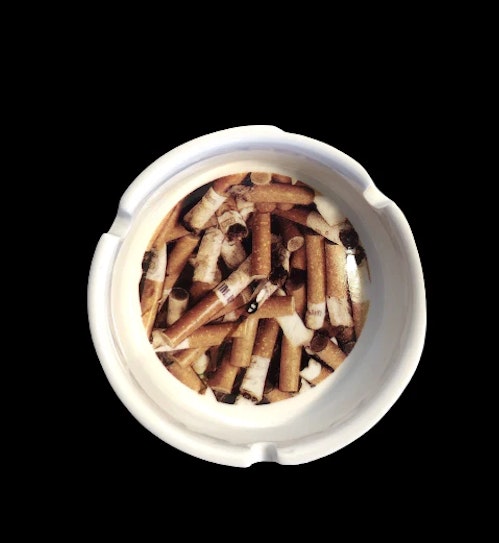
In 2001, one of the most famous contemporary British artists, Damien Hirst, had an installation of stacked ashtrays exhibited at the West London Gallery that was mistaken for trash and thrown away by a janitor.
Hirst himself later commented, "What a funny thing to do." After the work was thrown away in a garbage bag, it was discovered that it was a work of art, and the staff scrambled to retrieve the garbage bag, which was eventually recovered and used to reconstitute the work.
A work that was mistaken for trash in Italy as well

Artwork scattered on the floor
In 2015, at Museion, a museum of modern and contemporary art in Bolzano, Italy, a work of art made from empty bottles and used crackers was mistaken for trash and cleaned up by a cleaning crew.
The artists were a duet named Glodschmid & Chiari, female artists living in Milan.
After the opening party of the exhibition, the artwork, which was thought to be a remnant, was cleaned up. Fortunately, the trash was sorted and disposed of separately, so recovery and restoration was not difficult, and the exhibition was reopened on the 27th, three days after the incident.
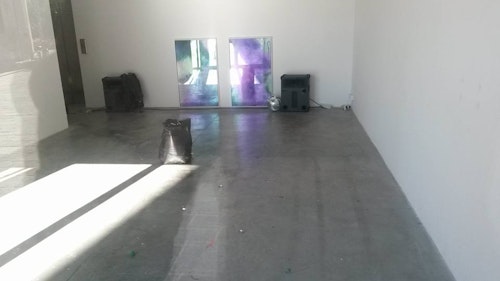
After it was cleaned up
Works that look like trash cans and garbage discarded in New York City
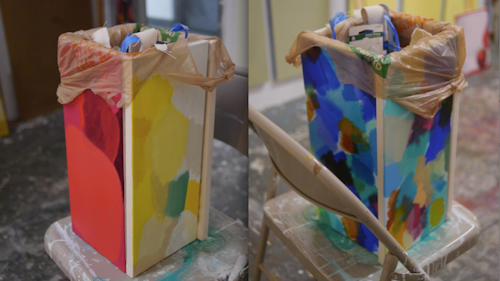
In February 2014, thousands of dollars worth of artwork by an artist named Paul Branca was mistakenly discarded. He said it looked completely like a dumpster and trash, with crumpled newspaper, cardboard, and cookie crumbs strewn across the floor.
The pieces, which were said to total $15,000 in total, were intended to remind us of the environmental impact of humanity's consumption behavior.
Tracy Emin's Cluttered Bed
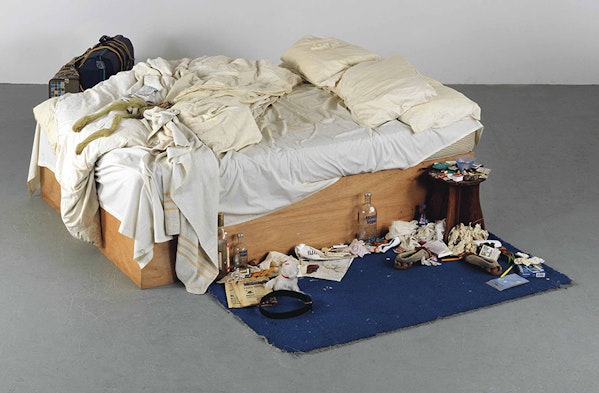
In 1998, British artist Tracey Emin presented "My Bed," an installation of a bed in her room that had been left in disarray by an alcoholic addiction. The work has been controversial since its inception, as it appears to be a mere scattering of everyday items, rather than the craftsmanship and beauty common to traditional art.
Gavin Turk's $14 million trash bag.
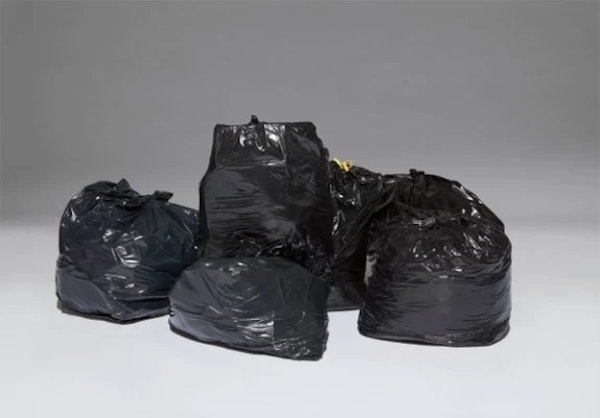
One work in particular, a collection of five garbage bags, sold for about 14 million Japanese yen at an auction held in New York in 2016.
In fact, this piece was not just a garbage bag. It was made of bronze and colored to look like black plastic. A work of art faithfully made to look like a real trash bag is an elaborate piece of work.
Knowing this, one can see that it is a genuine work of art that requires skill and cost.
Kimiyo Mishima's Trash Bin Art
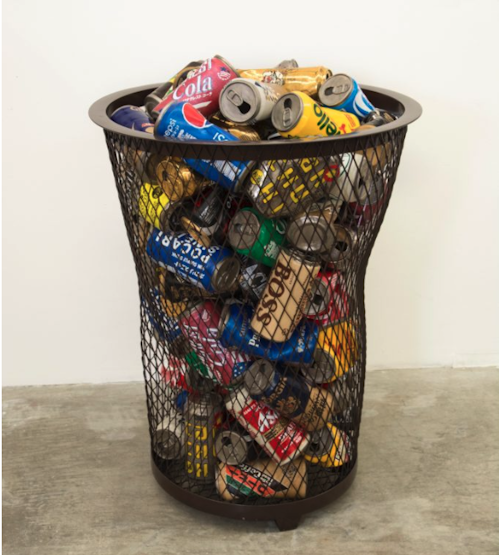
Kimiyo Mishima has created a trash can literally filled with canned garbage.
It is, however, a huge trash can, larger than a person's height.
When Mishima saw her husband Shigeji's horse race tickets and newspapers accumulating at home, she began making collages with them.
Gradually, she began to make sculptures that could not be contained in a pictorial collage. He began presenting three-dimensional works in the shape of newspapers made of ceramics, reincarnating the newspapers into ceramic forms that will exist forever as long as they do not break.
At the Benesse House Museum in Naoshima, there is now an enlarged 5-meter-high trash can.
This contrast was important to Mishima's work, in which what looks like trash in a photograph becomes nothing more than a work of art when seen in reality due to its obvious discrepancy in scale.
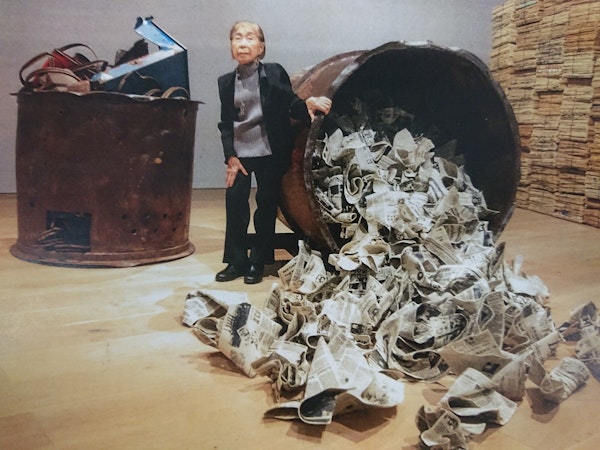
What is the difference between a work of art and mere trash?
Up to this point, we have introduced works that have been considered to be on the borderline between "contemporary art" and "trash.
After all, it is clear that any object can be a work of art if three conditions are met: the artist's intention, the declaration that "this is a work of art," and the placement of the work in the "place where it is exhibited.
This was already anticipated when Duchamp unveiled "Fountain" in 1917. Although "Fountain" was controversial at the time of its publication, it is now recognized as the father of the concept of "contemporary art.
In the case of the destruction of Keiji Usami's work, it can be understood that the artist's intention and the declaration of the work were at odds with each other due to the passage of time and lack of information sharing.
A "work of art" is established by three parties: the creator, the administrator of the place where it is exhibited, and the viewer.
When that equilibrium is upset, no matter how luxurious the material used or how commonplace the object, it will fall outside the framework of a "work of art.
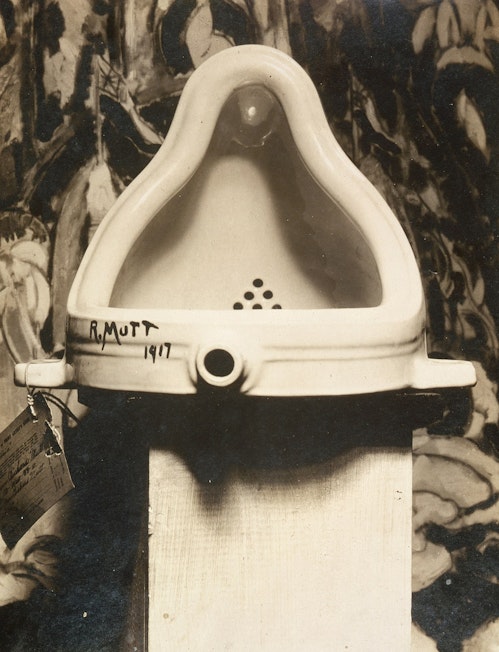
View TRiCERA ART's latest works
TRiCERA ART members enjoy a variety of benefits and preferences.
- Discounts, including members-only secret sales and coupons
- Create your own collection by registering your favorite artists
- Receive updates on popular artists, exhibitions, and events
- Receive a weekly newsletter with selected art
- Personal Assessment to find out what kind of art you like.
Please register as a member for free and receive the latest information.
Free Member Registration
#seo